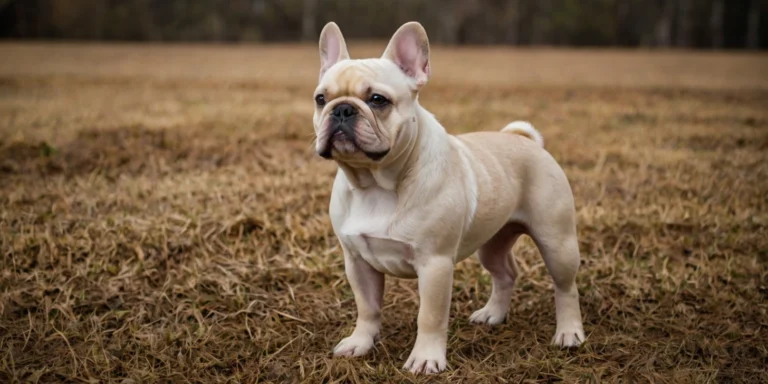Mini Goldendoodle Size: Everything You Need to Know in 2025
Mini Goldendoodles are winning hearts in 2025 with their adorable looks and compact size, making them a top choice for dog lovers. As a cross between a Golden Retriever and a Miniature Poodle, these pint-sized pups offer the perfect balance of charm and manageability. If you’re curious about the size of a Mini Goldendoodle, from puppyhood to adulthood, this guide has you covered. We’ll explore their size range, growth stages, care tips tailored to their dimensions, and more to help you decide if this breed fits your lifestyle. Let’s dive into the world of Mini Goldendoodle size!
How Big Is a Mini Goldendoodle?
Mini Goldendoodles are a smaller version of the Goldendoodle family, bred to be compact yet full of personality. Unlike Standard Goldendoodles, which can weigh up to 90 pounds, Mini Goldendoodles are designed for smaller spaces and easier handling. Their size depends on their genetics, such as whether they’re F1 (50% Golden Retriever, 50% Miniature Poodle) or F1B (75% Poodle, 25% Golden Retriever), but they generally fall within a predictable range.
Mini Goldendoodle Size at a Glance
- Weight: 15–35 pounds when full grown (12–18 months).
- Height: 13–20 inches tall at the shoulder.
- Puppy Size: 6–15 pounds at 8 weeks, growing steadily.
- Lifespan: 10–14 years with proper care.
- Build: Compact, sturdy, and well-proportioned.
Their size makes them ideal for apartments, small homes, or families who want a portable pet. However, size can vary slightly depending on the Poodle parent’s size (Miniature Poodles range from 10–15 pounds) and breeding practices.
Mini Goldendoodle Size Through Life Stages
Understanding how Mini Goldendoodles grow helps you plan for their needs. Here’s a breakdown of their size from puppy to adult.
Puppy Stage (0–6 Months)
- Weight: 6–15 pounds.
- Height: 8–12 inches.
- Growth: Puppies gain weight rapidly, doubling by 12 weeks. Their size depends on diet, genetics, and care.
- Needs: Gentle exercise and a nutrient-rich diet support healthy growth.
Adolescent Stage (6–12 Months)
- Weight: 12–25 pounds.
- Height: 10–16 inches.
- Growth: Growth slows, but they fill out, gaining muscle and coat fullness.
- Needs: Transition to two meals daily and increase exercise gradually.
Adult Stage (12–18 Months and Beyond)
- Weight: 15–35 pounds.
- Height: 13–20 inches.
- Growth: Reaches full size by 12–18 months, with minor weight fluctuations based on activity or spaying/neutering.
- Needs: Maintain a balanced diet and regular activity to stay fit.
Why Mini Goldendoodle Size Matters
The Mini Goldendoodle’s size affects everything from their care to their suitability for your home. Here’s why their compact dimensions are a big deal.
Advantages of Their Small Size
- Space-Saving: Perfect for apartments, condos, or small homes.
- Travel-Friendly: Easy to transport for trips or outings.
- Kid-Friendly: Their size makes them manageable for families with children.
- Lower Costs: Smaller dogs often need less food and smaller supplies.
- Adaptable: Fits active or relaxed lifestyles, from city to countryside.
Challenges of Their Size
- Exercise Needs: Require 30–60 minutes of daily activity despite their small stature.
- Fragility: Smaller Minis (closer to 15 pounds) need careful handling around young kids.
- Grooming: Their low-shedding coats need regular care, regardless of size.
- Health Risks: Small size may increase risks like dental issues or joint problems.
Caring for a Mini Goldendoodle Based on Size
Their compact size requires tailored care to keep them healthy and happy. Here’s how to meet their needs.
Nutrition for Mini Goldendoodle Size
A balanced diet supports their small frame. Puppies need 2/3–1 cup of high-quality kibble daily, split into 3–4 meals until 6 months. Adolescents (6–12 months) require 1–1.5 cups in two meals, while adults need 1–2.5 cups daily, based on weight and activity.
- Tip: Choose kibble with protein like chicken or fish, avoiding fillers like corn. Consult your vet for portion guidance.
- Water: Provide 1 ounce per pound of body weight daily (e.g., 20 ounces for a 20-pound dog). Watch for excessive drinking.
Exercise for a Compact Breed
Mini Goldendoodles need 30–60 minutes of daily activity, like short walks, fetch, or playtime, to stay fit and prevent boredom. Their size makes them agile but not fragile, so moderate exercise works best.
- Activities: Try dog park visits, fetch with small balls, or indoor games. Puzzle toys engage their sharp minds.
- Socialization: Regular outings help them adapt to new people and environments.
Grooming for Their Small Coats
Their low-shedding, wavy, or curly coats need brushing 2–3 times weekly and professional grooming every 6–8 weeks to prevent matting. Their small size makes grooming quick but essential.
- Tools: Use a small slicker brush, metal comb, and pet-safe shampoo.
- Ear and Nail Care: Clean ears weekly to avoid infections and trim nails every 3–4 weeks.
Health Considerations for Their Size
Mini Goldendoodles may face size-related health issues like hip dysplasia, dental problems, or ear infections. Schedule annual vet visits for adults and biannual visits for dogs over 7 years. Spaying/neutering at 6–8 months can reduce risks, but check with your vet.
- Prevention: Use dental chews, flea/tick protection, and heartworm meds.
- Insurance: Pet insurance can help with vet costs, but review coverage carefully.
Training for Their Manageable Size
Their small size and high intelligence make training easy and fun. Start as puppies and continue into adulthood for best results.
Choosing a Mini Goldendoodle for Size
When selecting a Mini Goldendoodle, size matters. Reputable breeders charge $2,500–$5,000 for puppies and ensure:
Avoid breeders with prices under $1,000, as they may indicate poor practices leading to health or size inconsistencies. Adopting an adult Mini Goldendoodle from a shelter or rescue is a great option for those wanting a known size.
Mini Goldendoodle Size vs. Other Breeds
How does a Mini Goldendoodle’s size compare to other small breeds?
Vs. Micro Goldendoodle: Micros (5–15 pounds, 10–15 inches) are smaller and more delicate.
Vs. Maltipoo: Maltipoos are similar in size but may shed less, while Minis are sturdier.
Conclusion
Mini Goldendoodles’ compact size makes them a versatile, lovable choice for 2025. Their 15–35-pound frame fits many lifestyles, but their exercise, grooming, and health needs require commitment. Whether you raise a puppy or adopt an adult, understanding their size helps you provide the best care for a happy, healthy companion.
Ready to welcome a Mini Goldendoodle? Explore reputable breeders or rescues to find your ideal-sized pup. Share your questions or stories in the comments we’d love to hear from you!







